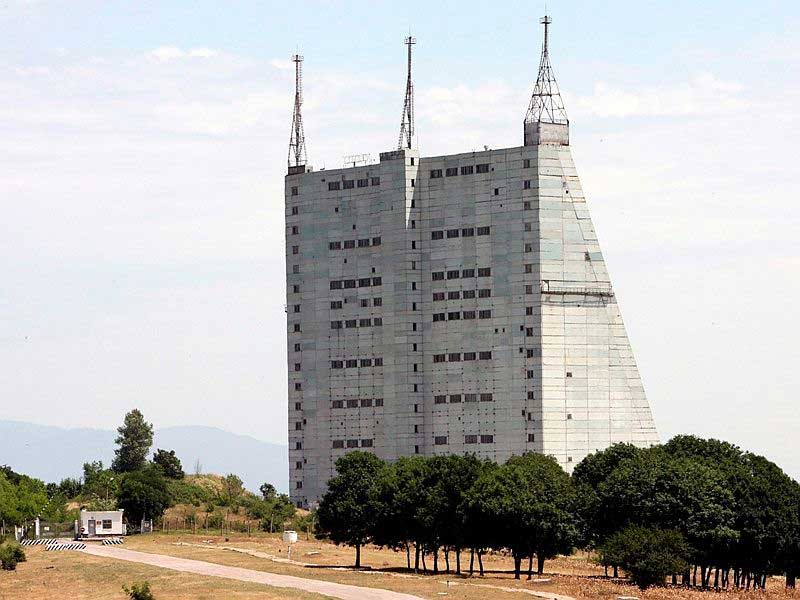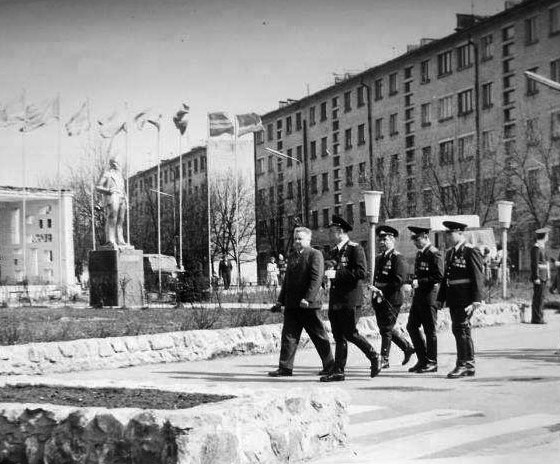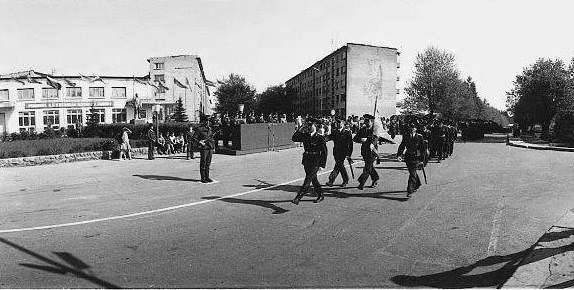SKRUNDA-1 [LV]
Exploration #71 Skrunda-1 (testo italiano a fondo pagina). Skrunda-1 is a special ghost town: during the period of activity it was a closed city and Soviet military base in Latvia. Skrunda-1 housed almost 5000 military, technicians and scientists (with related families) on duty at a radar station called in NATO slang “Hen House” (name deriving from the fact that it resembled a large chicken coop). It was one of the six radars built at the beginning of the Cold War in the peripheral areas of the then Soviet Union, capable of monitoring possible ballistic missile launches to Russia. The city was built in 1963 and had around 75 buildings spread over an area of more than 100 acres. The city was self-sufficient and inside there were schools, residences, a small hotel, a prison, places for leisure and bunkers.
The Russians left Latvia in 1994 but Skrunda-1 remained operational for a few more years. The city was finally emptied of all its valuable material and then abandoned by the Russians in 1998. The Latvians demolished the radar towers on the occasion of the exit of the Soviets, but the rest of the city was left abandoned in the middle of the forest.
In my urbex adventures I explored several ghost towns, but Skrunda-1 was a different experience. First of all, the vastness: we are not talking about a village but a real town with main roads and secondary avenues. Then the buildings: multi-storey apartment buildings, all the same in classic Soviet style that follow one after the other. Walking in these avenues was like experiencing the post-apocalyptic film scene. Inside, everything was devastated, but some small memories of the inhabitants remain, the ones that most impressed me, some small posters of some Russian teenagers who spent their childhood in Skrunda-1.
This exploration dates back to 2014. From 2016 it became an almost official tourist attraction and local authorities asked for an entrance ticket. Since 2018, however, the city has been under army control and is used for training and therefore unfortunately it can no longer be visited.
You could check my explorations these other ghost town: Costa di Soglio, Geamana flooded village.
Esplorazione #71. Skrunda-1 è una città fantasma speciale: durante il periodo di attività era una città chiusa e una base militare sovietica in Lettonia. Skrunda-1 ospitava quasi 5000 militari, tecnici e scienziati (con relative famiglie) in servizio presso una stazione radar chiamata in gergo NATO “Hen House” (nome derivante dal fatto che assomigliava a un grande pollaio). Era uno dei sei radar costruiti all’inizio della guerra fredda nelle zone periferiche dell’allora Unione Sovietica, in grado di monitorare eventuali lanci di missili balistici verso la Russia.
La città fu costruita nel 1963 e aveva circa 75 edifici distribuiti su un’area di più di 100 acri. La città era autosufficiente e al suo interno c’erano scuole, residenze, un piccolo hotel, una prigione, luoghi di svago e bunker. I russi lasciarono la Lettonia nel 1994 ma Skrunda-1 rimase operativa ancora per qualche anno. La città fu infine svuotata di tutto il suo materiale di valore e poi abbandonata dai russi nel 1998. I lettoni hanno demolito le torri radar in occasione dell’uscita dei sovietici, ma il resto della città è stato lasciato abbandonato in mezzo alla foresta.
Nelle mie avventure urbex ho esplorato diverse città fantasma, ma Skrunda-1 è stata un’esperienza diversa. Prima di tutto, la vastità: non stiamo parlando di un villaggio ma di una vera e propria città con strade principali e viali secondari. Poi gli edifici: condomini a più piani, tutti uguali nel classico stile sovietico che si susseguono uno dopo l’altro. Camminare in questi viali era come vivere la scena di un film post-apocalittico. All’interno, tutto era devastato, ma rimangono alcuni piccoli ricordi degli abitanti, quelli che più mi hanno colpito, alcuni piccoli poster di alcuni adolescenti russi che hanno passato la loro infanzia a Skrunda-1.
Questa esplorazione risale al 2014. Dal 2016 è diventata un’attrazione turistica quasi ufficiale e le autorità locali hanno chiesto un biglietto d’ingresso. Dal 2018, però, la città è sotto il controllo dell’esercito e viene utilizzata per l’addestramento e quindi purtroppo non è più visitabile.
Se ti è piaciuta questa esplorazione potresti dare un occhio anche a queste altre: Costa di Soglio, Geamana flooded village.



































